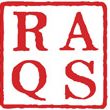Cybermohalla Hub
Cybermohalla Programme began in May 2001 as a dispersed network of labs and studios for experimentation across Delhi, initiated by the Sarai program (CSDS) and Ankur: Society for Alternatives in Education. The Cybermohalla Ensemble is a collective of ten writers and practitioners that emerged out of this programme. Over seven years (2001-07), around 500 young people from various working class neighbourhoods inhabited these labs.
In 2006, ongoing conversations about urban life, knowledge production, and creativity anchored a proposal for a dedicated building for the Cybermohalla Programme. By mid-2007, Raqs Media Collective joined forces with Frankfurt-based architects Nikolaus Hirsch and Michel Müller to sketch the hub’s design. Those sketches evolved into a three-dimensional model in Frankfurt and then became a part of an exhibition at the Swedish Architecture Museum, Stockholm in March 2008. Hirsch and Müller offered three prototype visions: a standalone structure on an empty plot, a form adaptable to existing buildings, and a mobile, mutating unit that can find its host through travel.
In July 2008, Raqs invited Hirsch and Müller to build a 1:1 prototype in Bolzano, Italy, for Manifesta 7. Students from the Akademie der Bildenden Künste Stuttgart helped realise that prototype. Meanwhile, Ankur and Sarai pursued a long-term lease with the Municipal Corporation of Delhi (MCD) to construct the hub on a standard three-by-six-meter plot in Sawda-Ghevra—a resettlement colony defined by a rigid grid. As the MCD shifted its proposed site, the hub’s design adapted to new constraints. Due to bureaucratic intransigence, the building could never materialise as a functioning space in Delhi. In 2011, the team built another prototype at the Louisiana Museum of Modern Art in Copenhagen, keeping in mind the considerations towards its actual construction in Delhi.
Amid shifting times and evolving circumstances, Cybermohalla Hub remained a model for a space that signifies connection between different modes of practice, places, imaginaries, a transmitter, a joint and a part constituted of infinite parts.
Alongside the physical hub, the Cybermohalla Ensemble and an editorial collective (Jeebesh Bagchi, Nikolaus Hirsch, Prabhat K. Jha, Michel Müller, Shveta Sarda, Azra Tabassum) developed a book that mirrors the hub’s ethos. Rather than presenting a fixed “expert” perspective, the publication weaves questions, reflections, and speculative propositions from people who have engaged with Cybermohalla, questioning the premise of equality in the creation of knowledge. It unfolds like the hub itself—opening onto unexpected dialogues about porous urban life, the rhythms of intellectual and creative practice, and a space that calls people into collective thinking.
The work by Cybermohalla has been circulated in and prompted neighbourhood gatherings, exhibitions, online journals, radio broadcasts, and publications. Two of their significant publications include ‘Bahurupiya Shehr’ (2007 and ‘Trickster City’ (2010).
Through evolving prototypes and an accompanying book, Cybermohalla Hub invites us to reimagine urban infrastructures as places where knowledge, time, and creative impulses converge in shared spaces and collective thinking.
Cybermohalla Hub, Co-published by Sarai-CSDS and Sternberg Press (2011), Edited by Nikolaus Hirsch and Shveta Sarda

